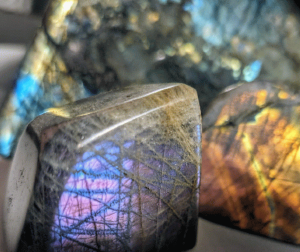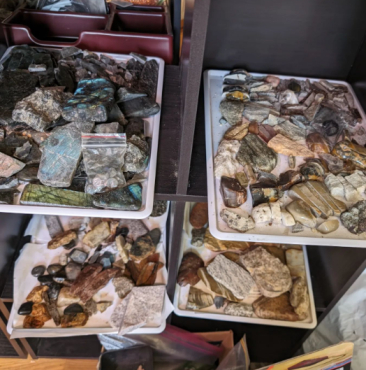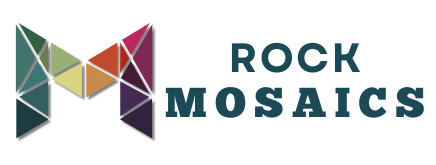

Rock Mosaics
by Rob Kall
I work with minerals, crystals, fossils and found rocks using lapidary tools to make mosaics.

Rock Mosaics
By Rob Kall
I work with minerals, crystals, fossils and found rocks using lapidary tools to make mosaics.

Why Rock Mosaics
I design and make mosaics that bring nature into your home. I use lapidary tools to cut and shape rough and raw rocks, but I don’t eliminate or polish out the roughness. My mosaics are, in a way, living, since there are parts of them that may change. The copper, or the rocks that have copper in them, like chrysocolla and malachite, may oxidize. The mica and some of the more fragile rocks may crumble, so the mosaics may change over time.
BE UPDATED ON MY MAJESTIC CREATIONS

The Process
My mosaics start in the field, rockhounding. I choose rocks that I can envision being used in my mosaics, hopefully, really cool, beautiful ones that will add to the mosaics. So it starts with curation. I slice most of the rocks I find or buy. After slicing, I’ll pick one rock, or a collection of pieces from the same sliced and cut. Then I’ll start looking through my collection of thousands of other pieces that fit with it.
After a good start, I will add special pieces, minerals that have chatoyancy, meaning special optical effects, like flashy colors or glow, shine, or sparkle. And I’ll usually include at least one fossil that’s millions or hundreds of millions of years old. Painters have a palette using different color paints.
My palette is composed of Rocks, minerals, crystals, fossils and glass and metals Besides the rocks I find locally and in my travels, I also purchase many rocks including, agates, amber, amethyst, apatite, azurite, crystallized bismuth, chalcopyrite (peacock ore,) chrysocolla, copper, emerald, fluorite, fossils, fulgurite, garnet, gniess, hematite, jade, jasper, kyanite, labradorite, lepidolite, malachite, mica, moonstone, petrified wood, pietersite, quartz, rosy quartz, selenite, slate, smoky quartz, selenite, sodalite, sphalerite, tanzanite, tiger eye, turquoise, vivianite, and cullet glass. On all but the smallest of my mosaics, I include hanging hardware, so they don’t need a frame.

People ask me where I get my materials. I source some rockhoundin. Others I buy from eBay, from mineral, fossil and gem shows, Alibaba, and vendors I discover online or at different shows. Lately I’ve been buying from wholesalers and importers. I took my first art course, a sculpture course, when I was a student at Penn State University. In that course, I worked with welding iron, rope and epoxy, and plaster, mirror and wood.
But that was over 50 years ago. I feel blessed that, at 73, I’m enjoying the challenges of learning about lapidary arts, rock-hounding, geology, rock hardness, rock cutting, different ways to adhere mosaics, using epoxy, and identification of rocks, the art of creating mosaics, and what’s involved in taking my art and making a business of it as well.
About Rob Kall
Rob Kall is an award winning journalist, inventor, software architect, connector and visionary. He is the author of The Bottom-up Revolution; Mastering the Emerging World of Connectivity He’s given talks and workshops to Fortune 500 execs and national medical and psychological organizations, and pioneered first-of-their-kind conferences in Positive Psychology, Brain Science and Story. He hosts some of the world’s smartest, most interesting and powerful people on his Bottom Up Radio Show, and founded and publishes one of the top Google- ranked progressive news and opinion sites, OpEdNews.com.
As Founder of Rock Mosaics, he’s enjoying the challenges of learning about lapidary arts, rock-hounding, geology, rock hardness, rock cutting, different ways to adhere mosaics, using epoxy, and identification of rocks, the art of creating mosaics, and what’s involved in taking art and making a business of it as well.

